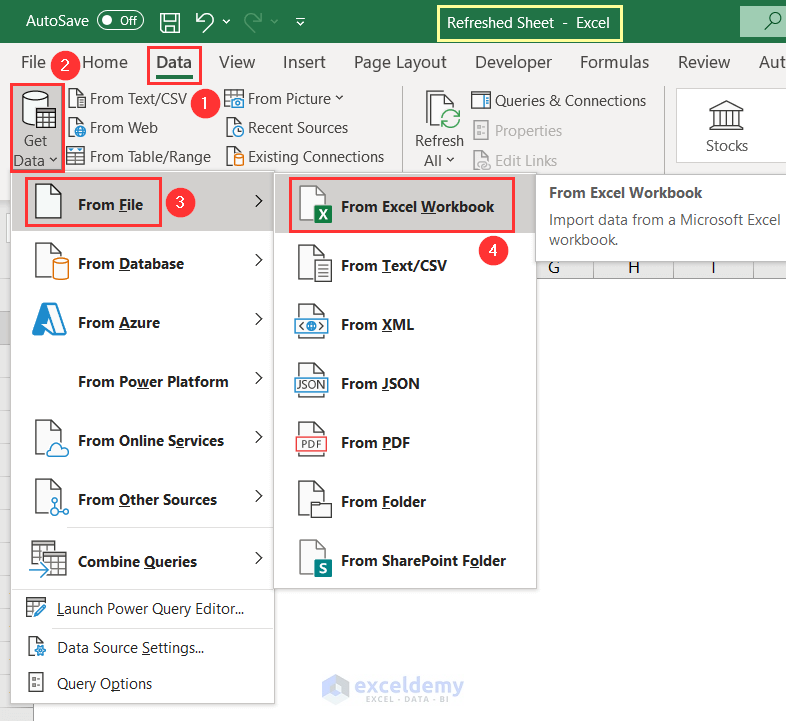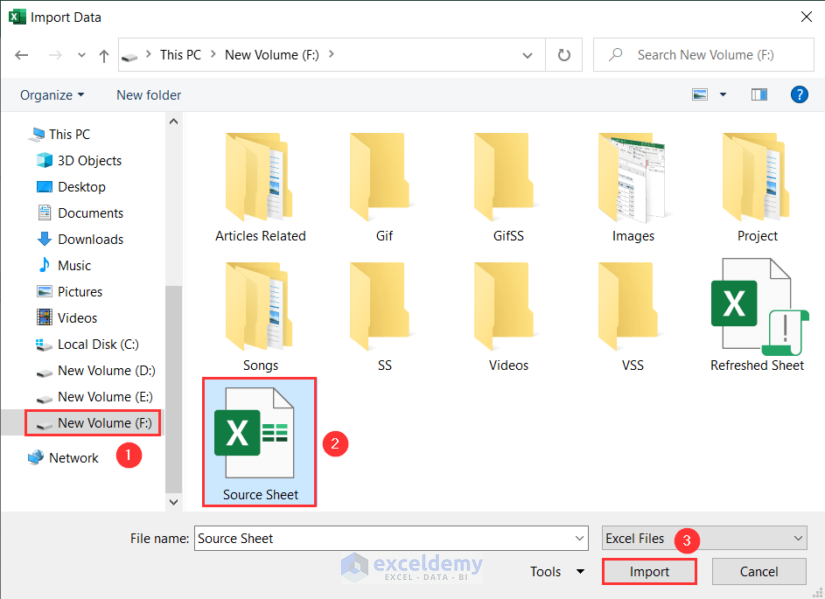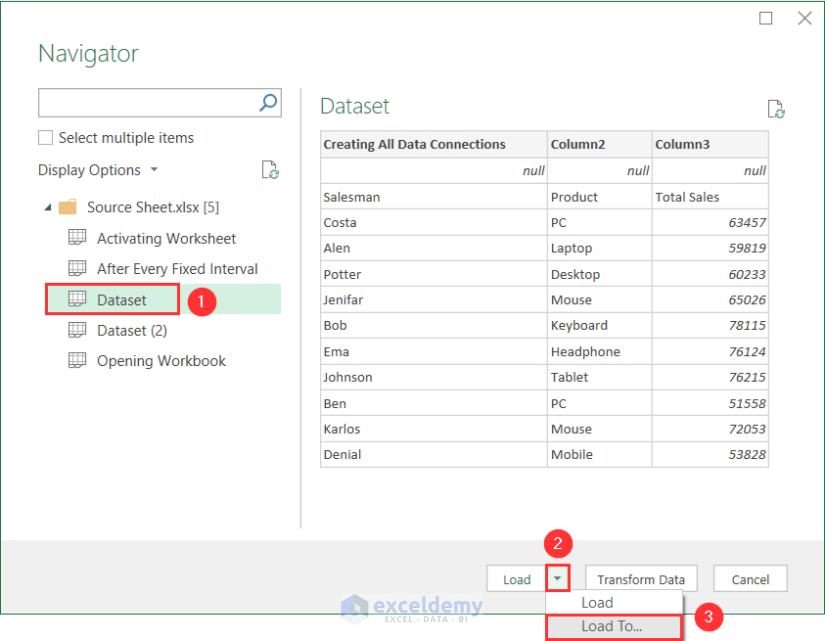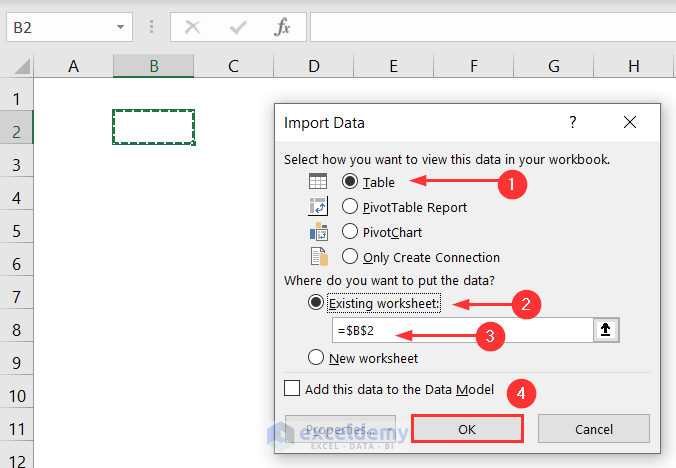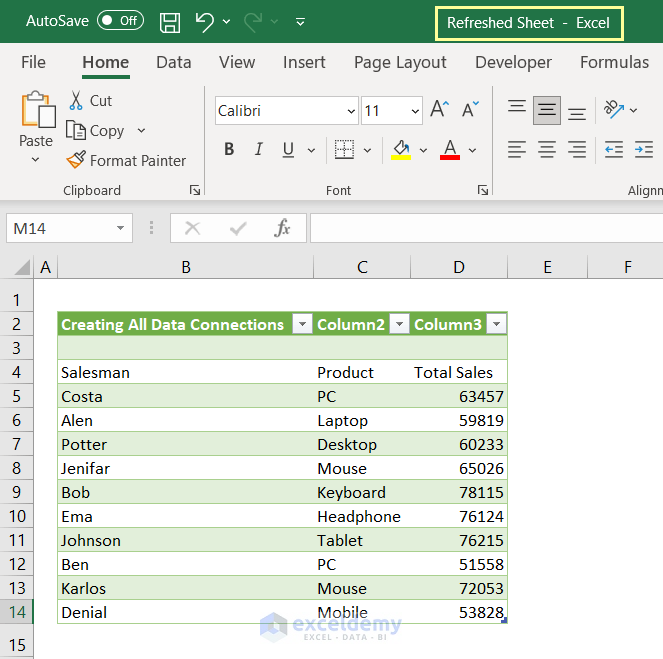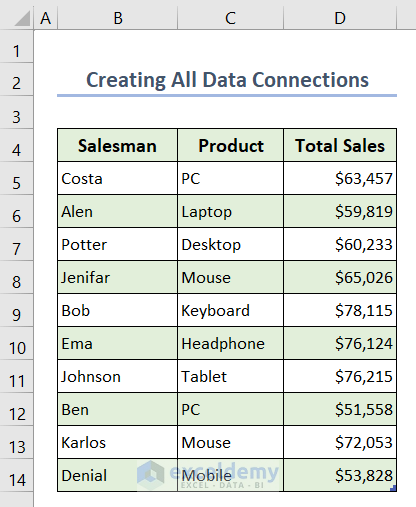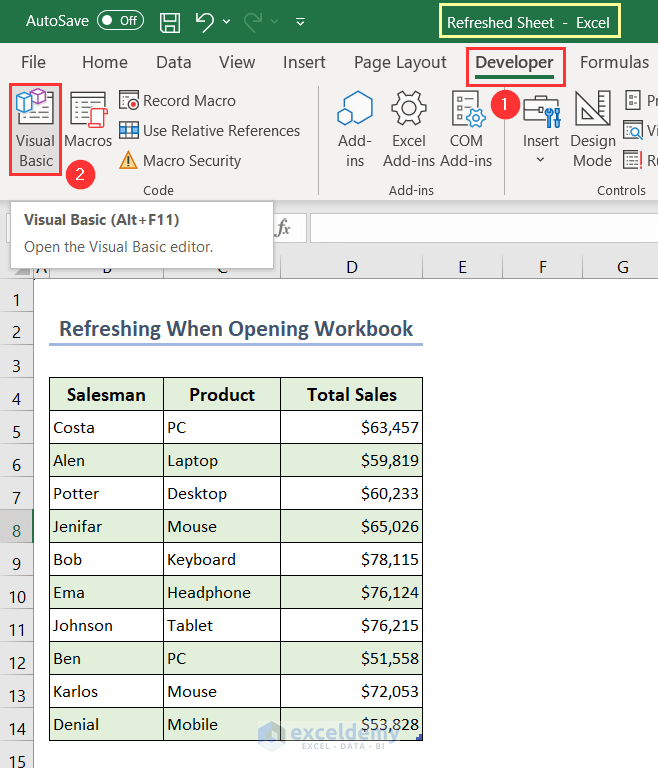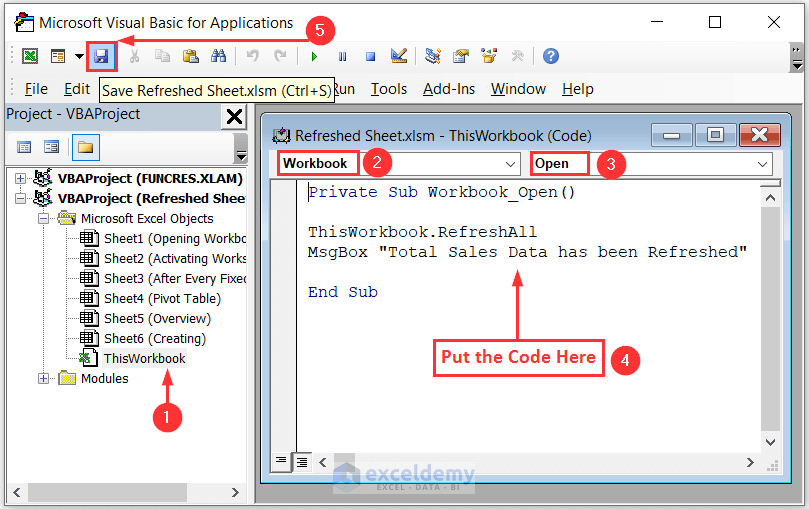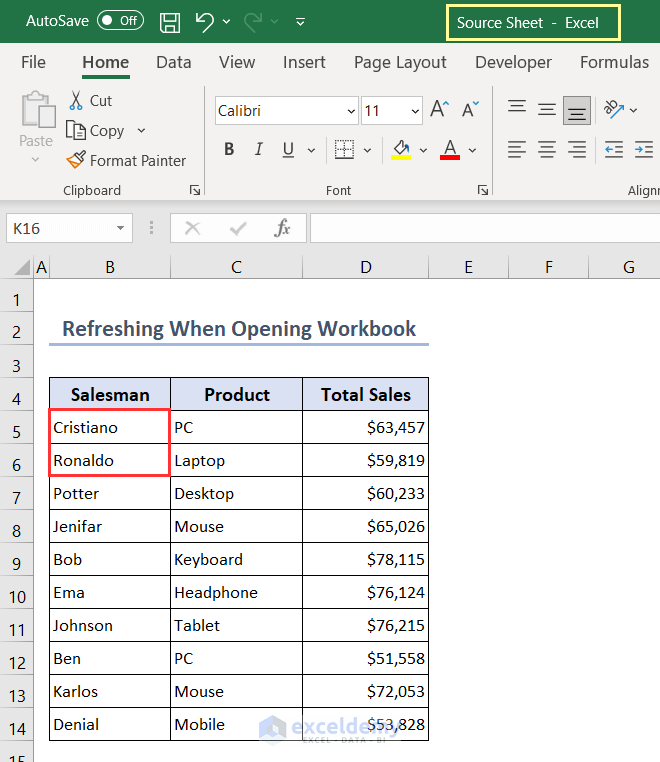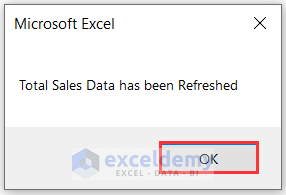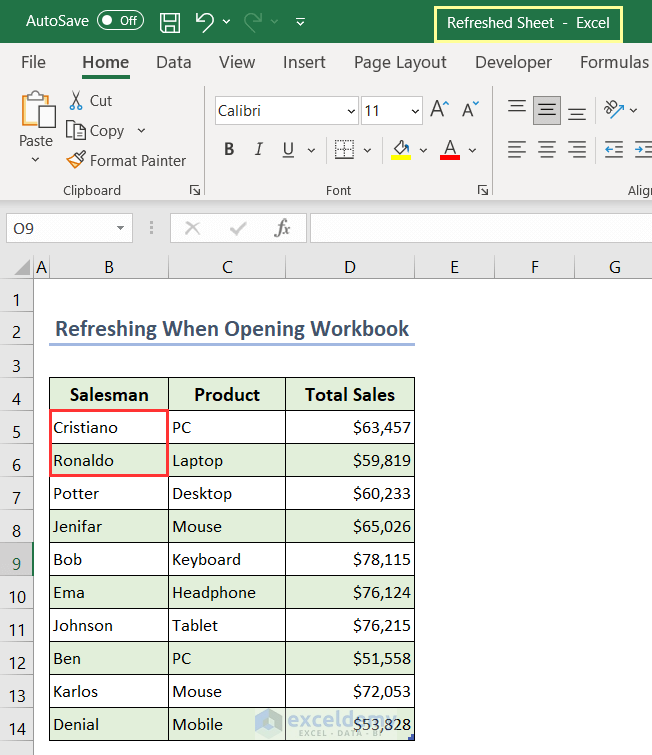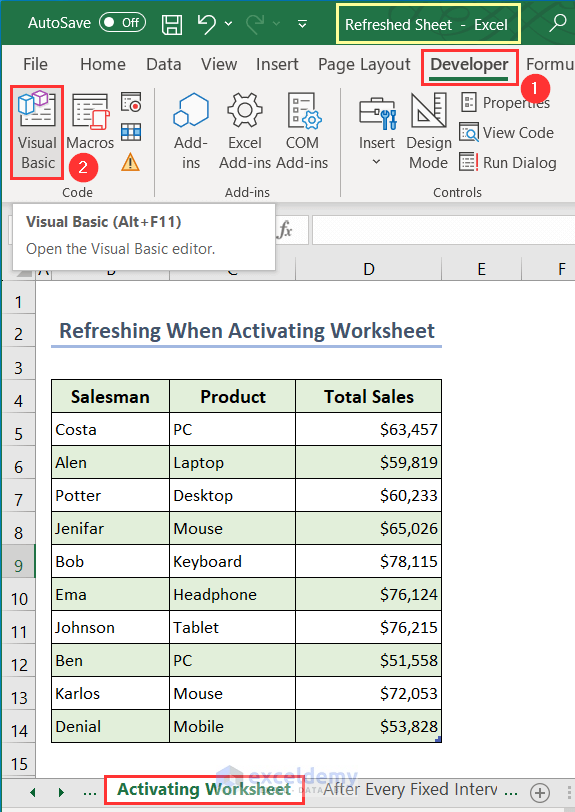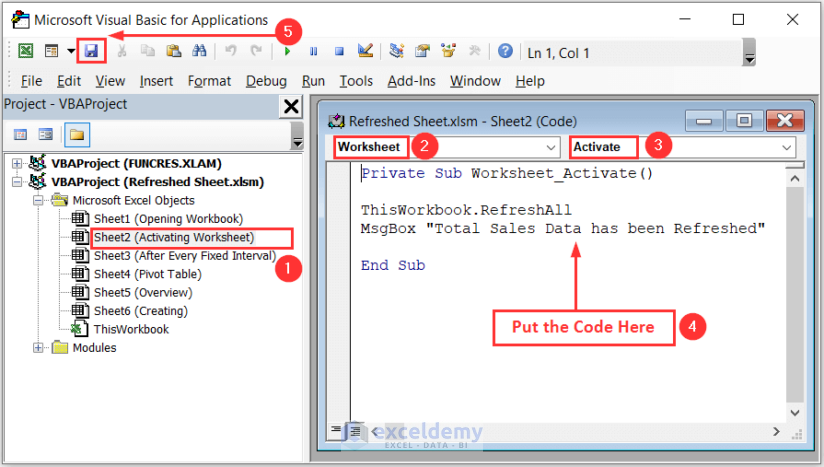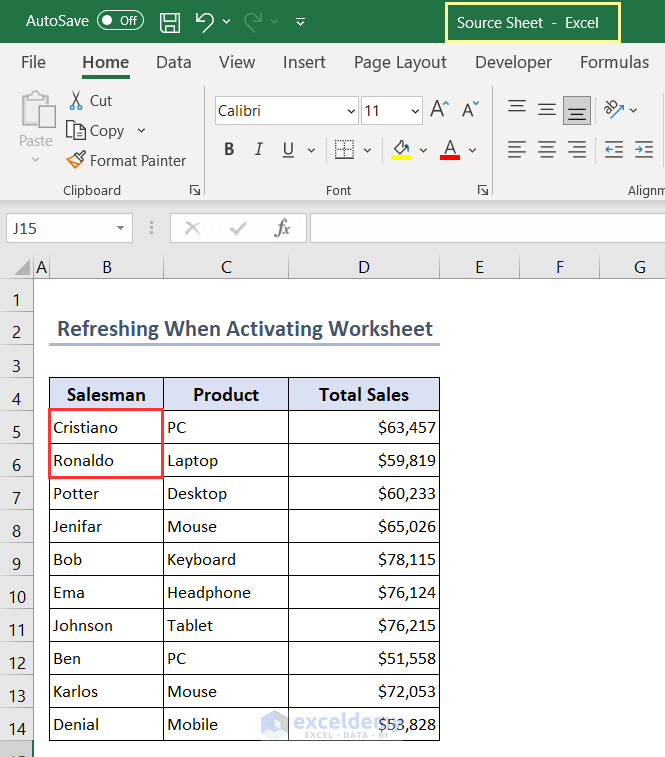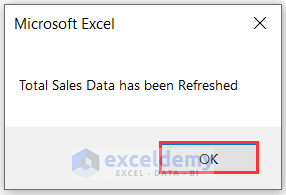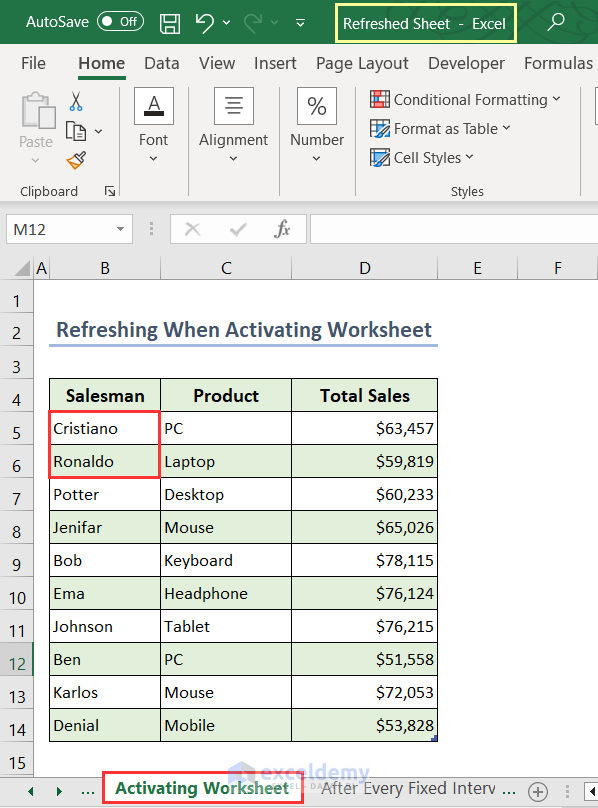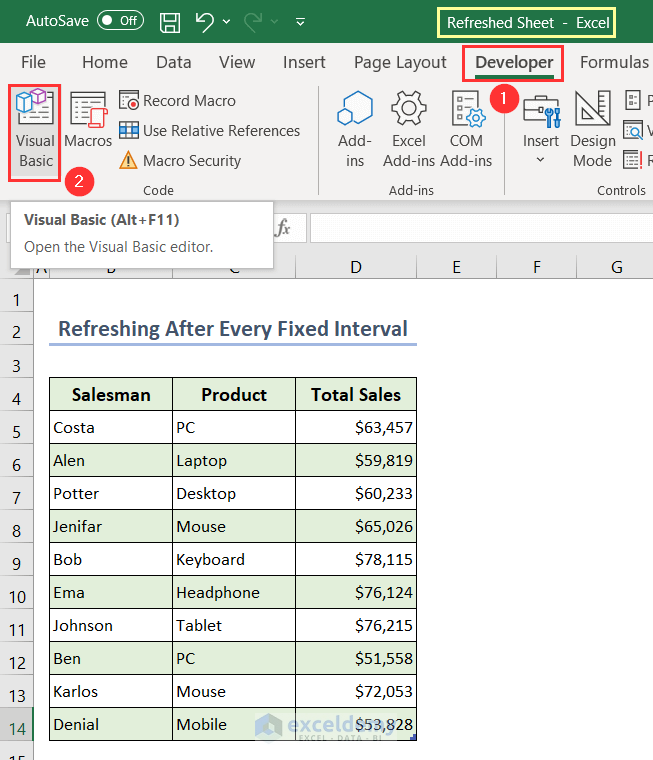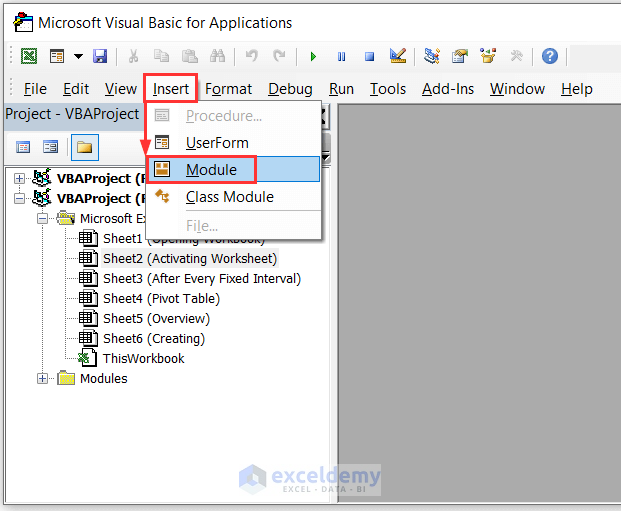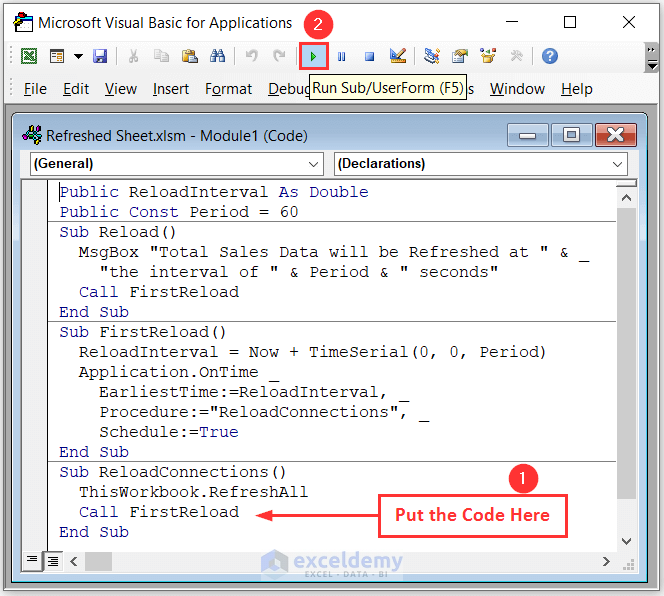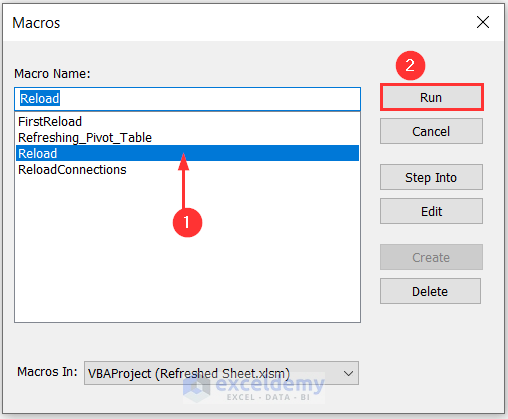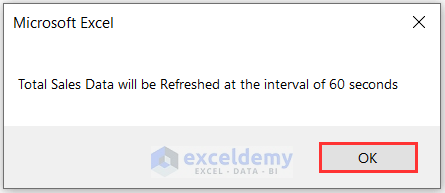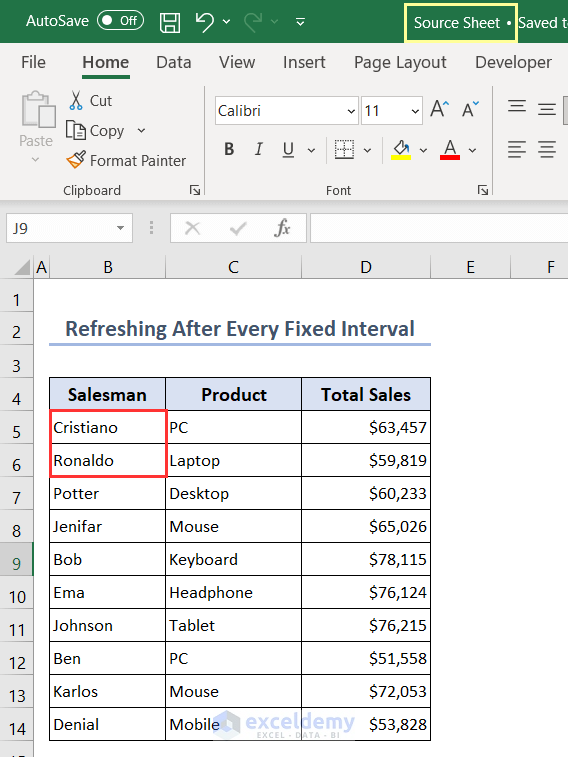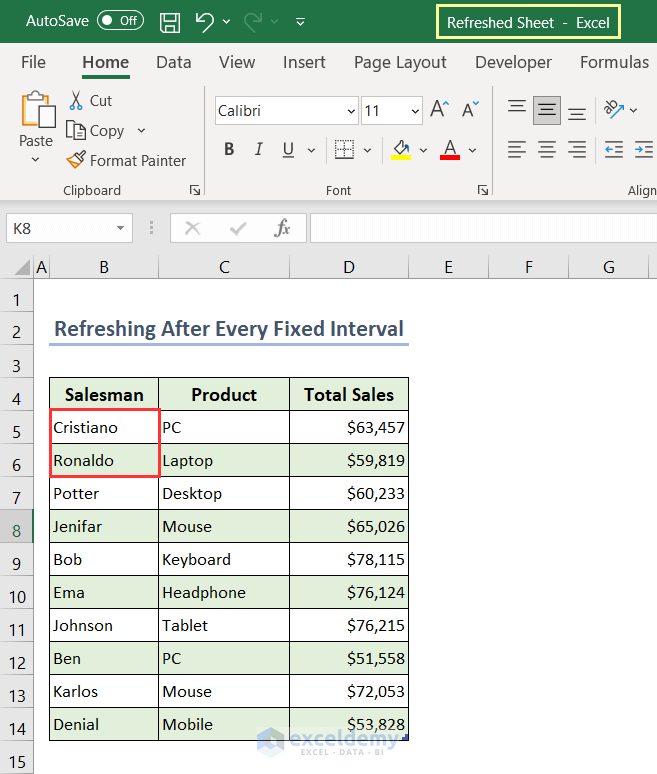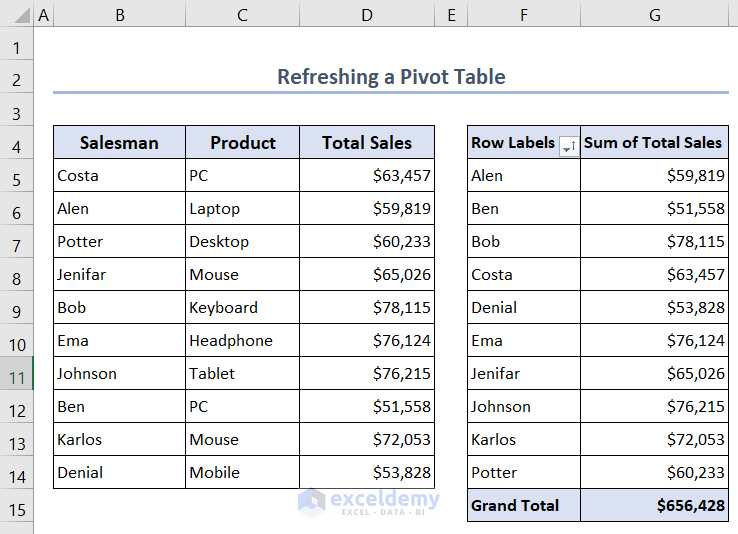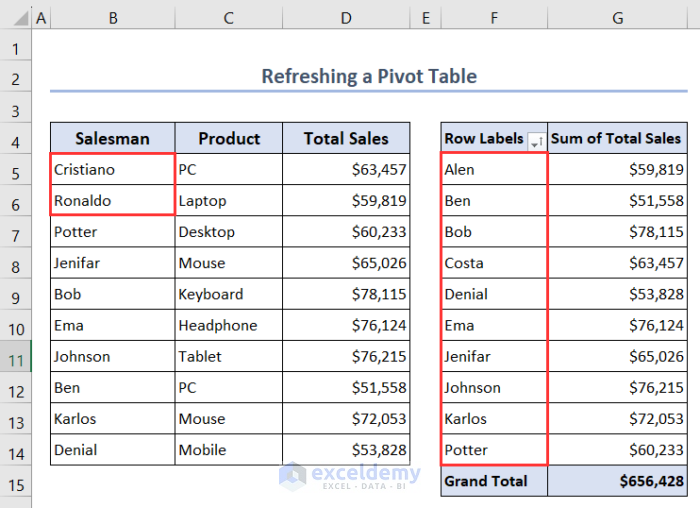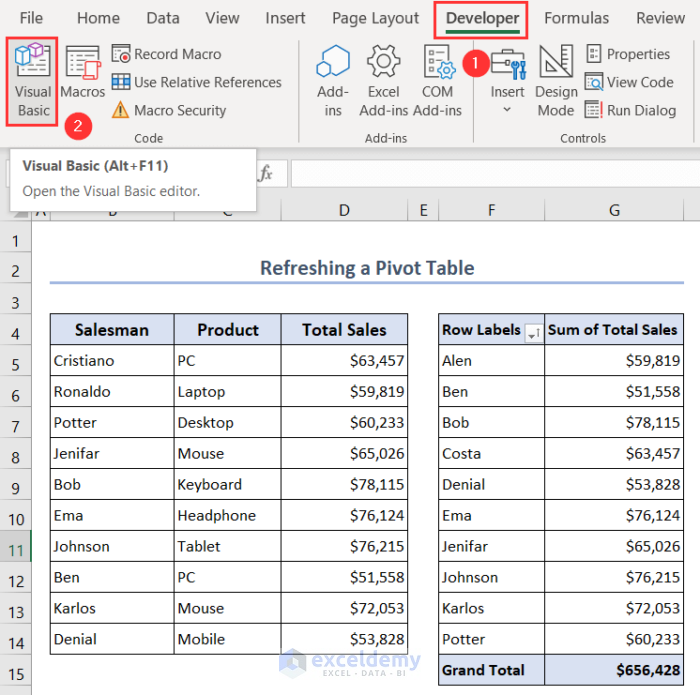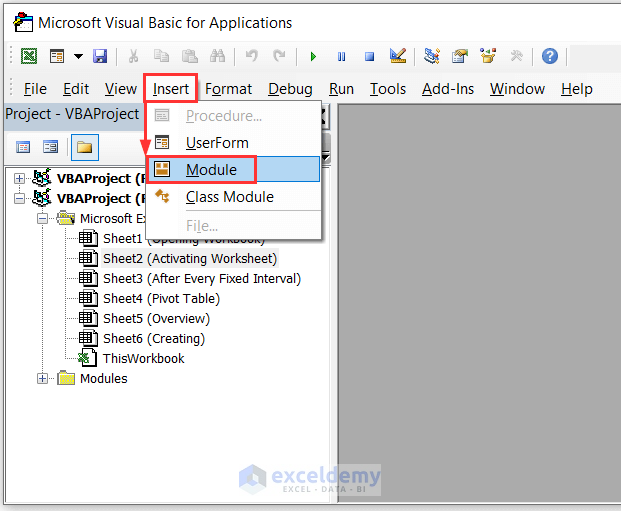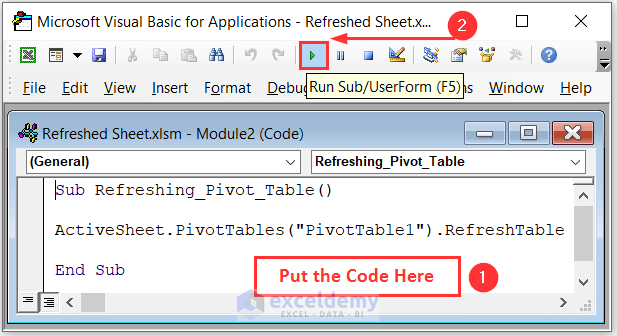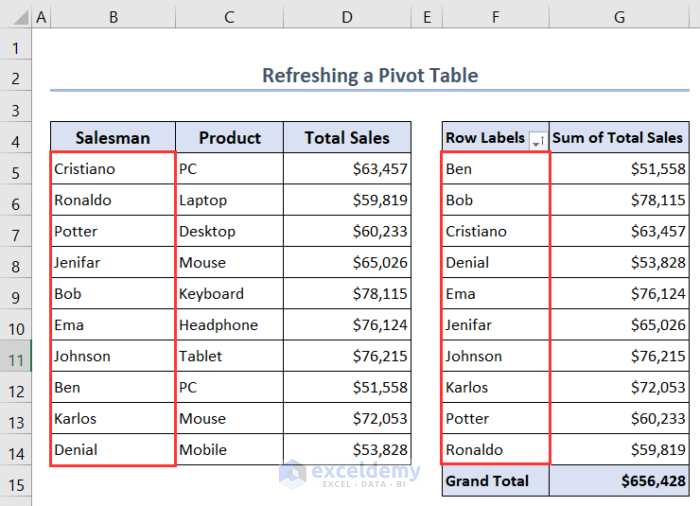This is an overview of Excel VBA tools used to refresh data connections.
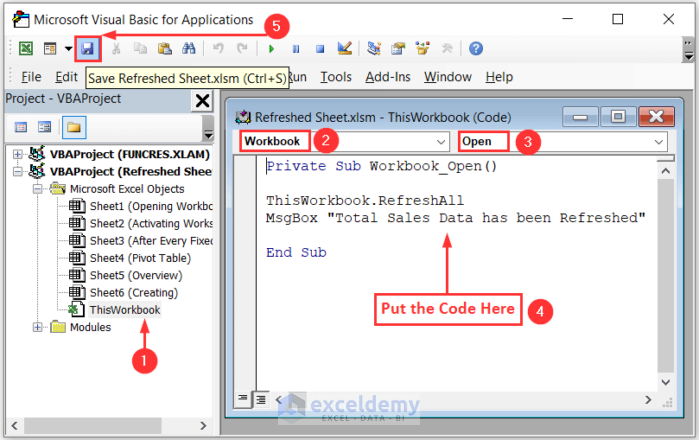
Create Data Connections between Excel Files
- The original dataset is the Dataset sheet in the Source Sheet workbook .
- Upload this dataset to a new book: Refreshed Sheet.
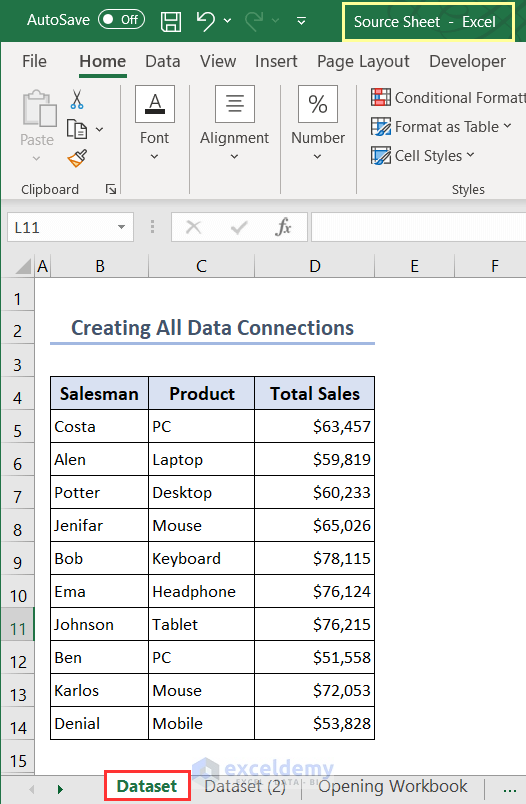
- In the Refreshed Sheet, go to Data > Get Data > From File > From Excel Workbook.
- Choose the file you want to upload.
- Here, Source Sheet from New Volume (F:).
- Click Import.
- In the Navigator window select the sheet containing the dataset you want to upload. Dataset, here.
- Go to Load and click Load To.
- In the Import Data window select Table.
- Choose Existing worksheet: to provide the position of the dataset and enter B2.
- Click OK.
- Your data will be uploaded to the Refreshed Sheet in a table format. It’ll be connected with the Source Sheet.
- You can format the dataset to make it clearer.
How to Refresh All Data Connections Using Excel VBA – 4 Examples
Example 1 – Refreshing When Opening Workbook
- Open the workbook Refreshed Sheet and go to Developer > Visual Basic. You can also use Alt + F11 to open Visual Basic.
- Double-click ThisWorkbook.
- Choose Workbook > Open > Module and enter the following code.
Private Sub Workbook_Open()
ThisWorkbook.RefreshAll
MsgBox "Total Sales Data has been Refreshed"
End Sub- Click Save or press Ctrl + S. You don’t have to run the code.
- Close the Refreshed Sheet.
- Open the Source Sheet and change the two first names in Salesman.
- Save and close.
- Open the Refreshed Sheet. This message will be displayed.
- Click OK.
- The dataset is refreshed automatically.
Example 2 – Refreshing When Activating Worksheet
- Select Visual Basic in the Developer tab in the Activating Worksheet (Refreshed Sheet workbook). You can also use Alt + F11 to open the Visual Basic.
- Double-click Sheet2 (Activating Worksheet).
- Choose Module> Worksheet >Activate and enter the following code.
Private Sub Worksheet_Activate()
ThisWorkbook.RefreshAll
MsgBox "Total Sales Data has been Refreshed"
End Sub- Click Save or press Ctrl + S. You don’t have to run the code.
- Close the Refreshed Sheet.
- Change the two first names in Salesman in the Source Sheet.
- Save and close.
- Open the Refreshed Sheet and activate the Activating Worksheet. This message will be displayed.
- Click OK.
- The dataset is automatically updated.
Example 3 – Refreshing After a Fixed Interval with VBA
60 seconds or 1 minute is the fixed interval, here.
- In the Refreshed Sheet select Visual Basic in the Developer tab.
- In Visual Basic choose Insert and select Module.
- Enter the following code and click Run or press F5 to run the code.
Public ReloadInterval As Double
Public Const Period = 60
Sub Reload()
MsgBox "Total Sales Data will be Refreshed at " & _
"the interval of " & Period & " seconds"
Call FirstReload
End Sub
Sub FirstReload()
ReloadInterval = Now + TimeSerial(0, 0, Period)
Application.OnTime _
EarliestTime:=ReloadInterval, _
Procedure:="ReloadConnections", _
Schedule:=True
End Sub
Sub ReloadConnections()
ThisWorkbook.RefreshAll
Call FirstReload
End Sub- The Macros window will open.
- Select Reload and click Run.
- This message will be displayed. Click OK.
- In the Source Sheet, change the two first names in Salesman. Save and close.
- Wait 60 seconds and open the Refreshed Sheet.
- Data is automatically refreshed after every 60 seconds or 1 minute.
Read More: How to Refresh Data Connection in Excel Without Opening File
Example 4 – Refreshing a Pivot Table
- This is the Pivot Table with our dataset.
- Changing the two first names in Salesman won’t change data in the Pivot Table. It must be refreshed.
- Select Visual Basic in the Developer tab.
- In Visual Basic choose Insert and select Module.
- Enter the following code and click Run or press F5 to run the code.
Sub Refreshing_Pivot_Table()
ActiveSheet.PivotTables("PivotTable1").RefreshTable
End Sub- The Pivot Table is refreshed.
Read More: [Fixed]! Data Connection Not Refreshing in Excel
Download Practice Workbook
Download the Excel files and practice.
Conclusion
In conclusion, you have learned to use Excel VBA to automate the process of refreshing data connections in your workbook through this article. The article has shown different examples regarding refreshing data when opening a workbook, activating a worksheet, or at fixed intervals. Additionally, the ability to refresh Pivot Tables using VBA enhances your data analysis power. Please let us know in the comment section if there is any query or suggestions related to this topic.
Related Arrticles
- How to Create a Data Source in Excel
- [Fixed!] External Data Connections Have Been Disabled in Excel
- Excel Connections vs Queries
- [Solved!] Excel Queries and Connections Not Working
<< Go Back to Excel Data Connections | Importing Data in Excel | Learn Excel
Get FREE Advanced Excel Exercises with Solutions!